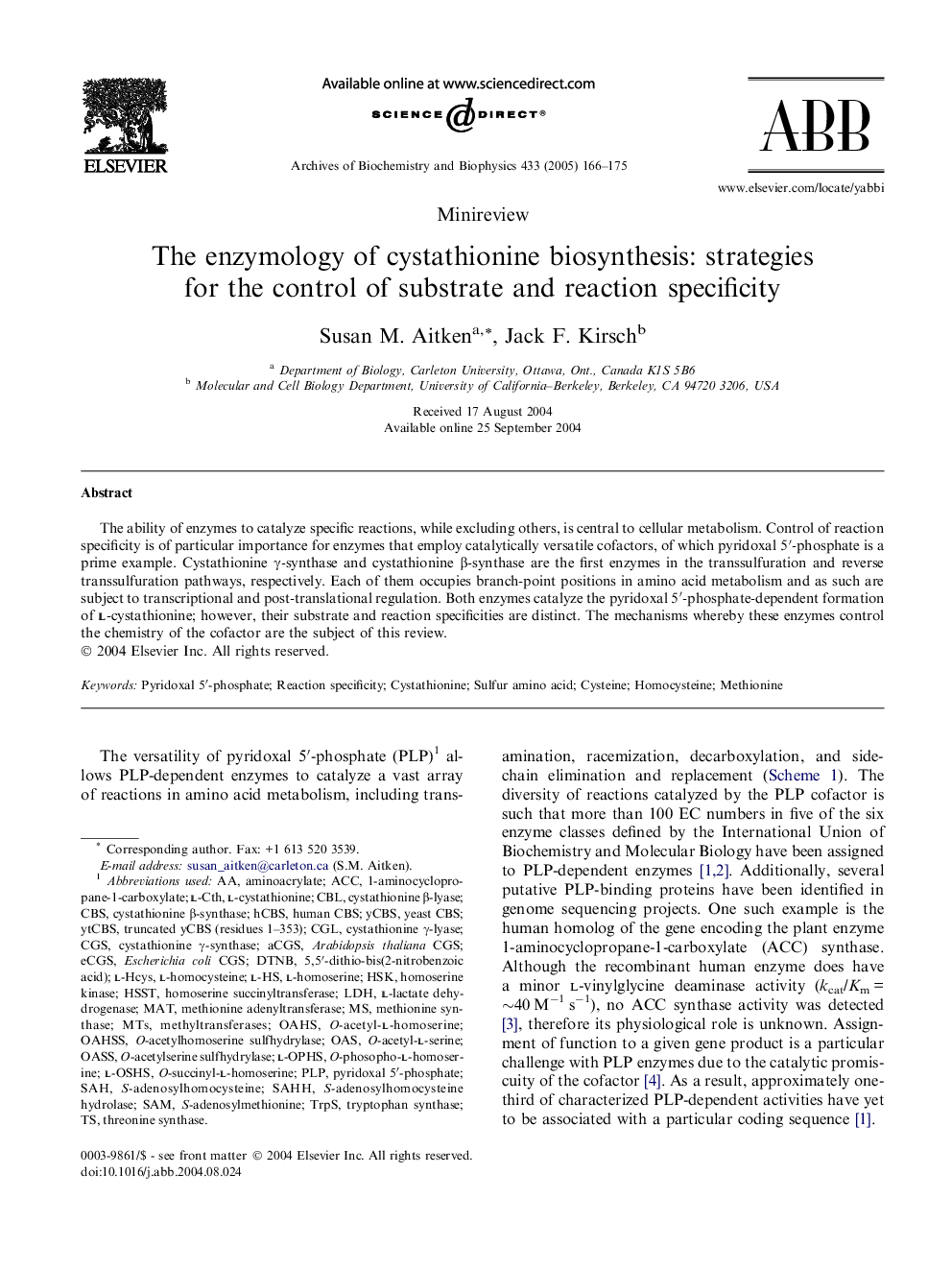| Article ID | Journal | Published Year | Pages | File Type |
|---|---|---|---|---|
| 9882417 | Archives of Biochemistry and Biophysics | 2005 | 10 Pages |
Abstract
The ability of enzymes to catalyze specific reactions, while excluding others, is central to cellular metabolism. Control of reaction specificity is of particular importance for enzymes that employ catalytically versatile cofactors, of which pyridoxal 5â²-phosphate is a prime example. Cystathionine γ-synthase and cystathionine β-synthase are the first enzymes in the transsulfuration and reverse transsulfuration pathways, respectively. Each of them occupies branch-point positions in amino acid metabolism and as such are subject to transcriptional and post-translational regulation. Both enzymes catalyze the pyridoxal 5â²-phosphate-dependent formation of l-cystathionine; however, their substrate and reaction specificities are distinct. The mechanisms whereby these enzymes control the chemistry of the cofactor are the subject of this review.
Keywords
Related Topics
Life Sciences
Biochemistry, Genetics and Molecular Biology
Biochemistry
Authors
Susan M. Aitken, Jack F. Kirsch,
